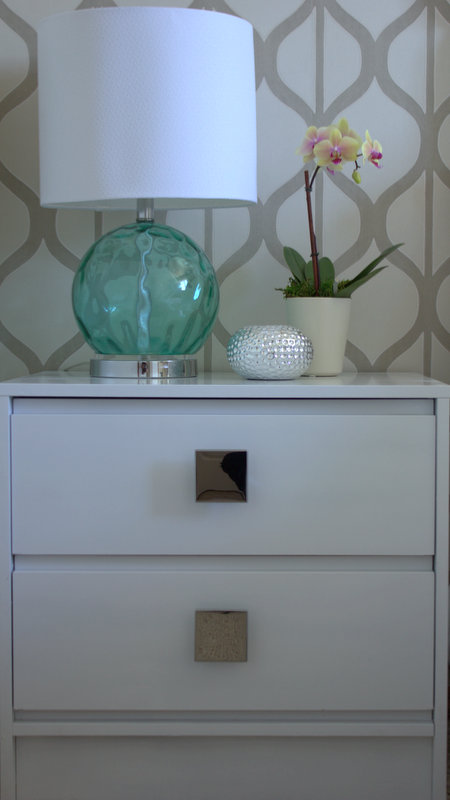I recently read a very interesting book by Annie Leonard called . In it she describes our consumer society as “a system in crisis” and gives some frightening facts about how our materialistic values are now threatening our very being. In a nutshell, the system is flawed throughout various stages :
1. Extraction- we are running out of our precious resources like trees, water and food.
2. Production- we use too much energy, add toxic chemicals that are harming us and polluting our atmosphere.
3. Distribution- we promote shopping and consumption by measuring our value based on the amount of stuff we own.
4. Dumpsites- we are filling up our landfills and releasing toxins into the air through incineration.
Leonard says that “1% of the stuff we buy is still in use 6 months later.“
Wow, 99% of the stuff we think we need ends up getting tossed? That’s a wake-up call.
Another disturbing fact: manufacturers are either intentionally making products that don’t last, or they are creating perceptions that the products are outdated and useless, so that we must buy new all over again. Ever noticed that refrigerators don’t last as long as they did when we were kids? And think about how many times we’ve upgraded our phones, computers and TV’s in the last few years? Did we really need to?
It is definitely something to take pause over.
I have been increasingly conscious of not buying things for my home just because they are so inexpensive. Yes, that cool retro clock may be a steal for $10 but I really don’t need another clock. Don’t get me wrong, I’m not against decorating our homes to make them comfortable and stylish. I believe we are fortunate that our circumstances grant us the luxury to make our homes and our lives into a true reflection of who we are.
But that’s the big question – is all of this STUFF truly representative of who we are? Are we our stuff, or we drowning in it?
More and more, many people are finding that our past consumerist tendencies have led us down the path of overwhelm which shackles them to homes full of things to take care of, clean and store. They have less time, freedom and money for the things that really matter in life.
And so, if we cull down our shopping, we can help save not only the planet but possibly our mental health as well!
How do you start?
By simplifying, reusing and repurposing.
Instead of buying new things for our homes, we can make a conscious effort to reduce spending and find things used things, or mend and make do with what we already own.
We can also learn to live with less. By living simply, with only things that are to our needs and comfort, we can build a home that’s calming and peaceful, and a life that’s more meaningful.
We can get over our need for stuff, and have less in our homes, while shopping sustainably for the things we do need to buy.
6 Ways to Simplify, Reuse & Repurpose
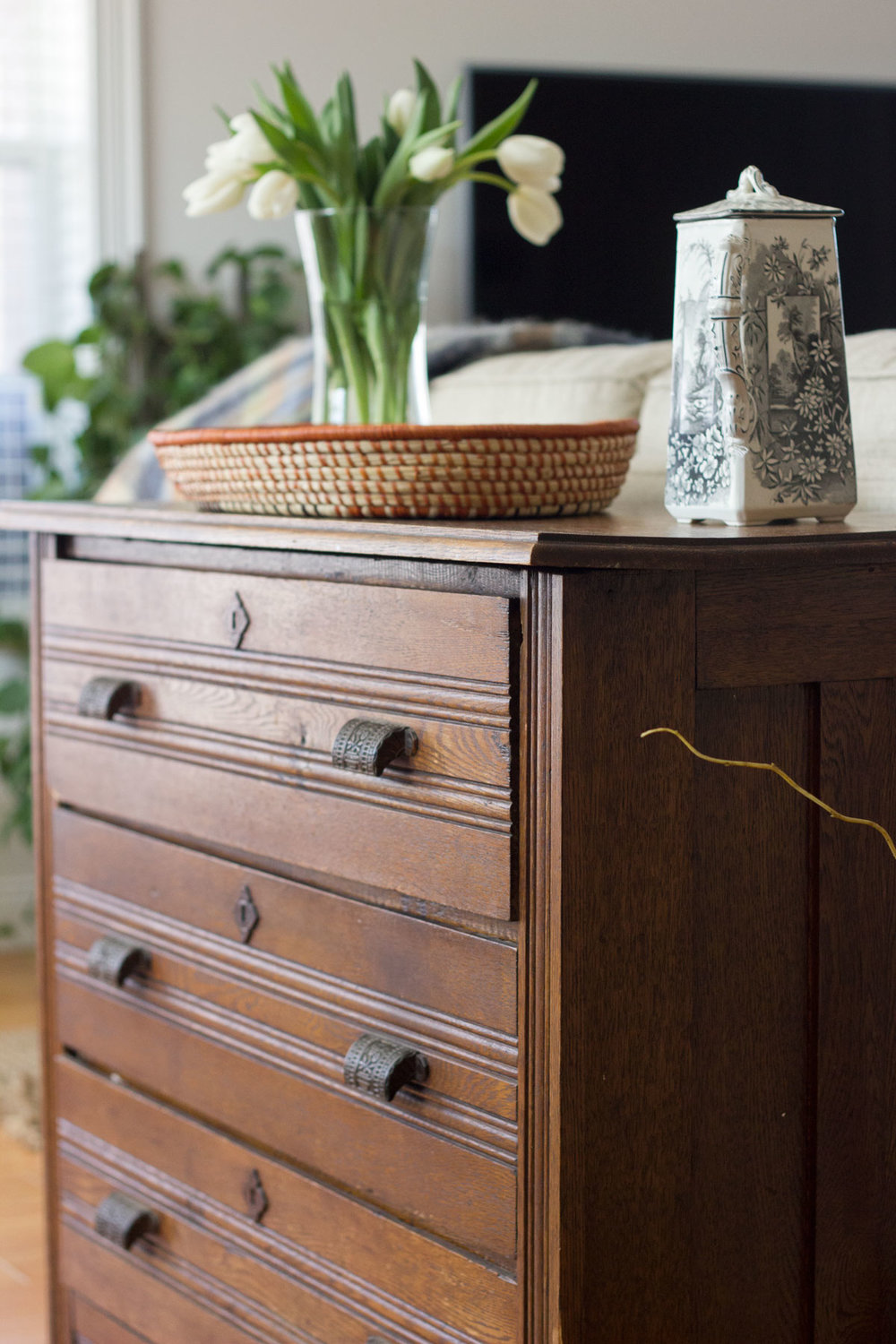
1. Look for vintage and antique solid wood pieces.
Think about how our grandparents used to live and the fantastic furniture they had. Many of those pieces are hanging around today and are the best quality pieces in our homes. Hang onto and cherish them. Look for tables, chairs, end tables, stools, dressers, bed frames and benches at yard and estate sales, antique markets or in your parents’ attic.
2. Find thrift store accessories and fix them up.
- Spray paint a dated brass lamp base and .
- Find old picture frames at thrift stores or yard sales and paint them to use for DIY art of your kid’s drawings.
- Look for kitchenware, dishes and glasses at thrift stores.
3. Mend your stuff.
Learn how to do some basic sewing to fix up your own clothing when it needs to be mended. The same can be done for curtains and pillows that need hemming or fixing. Mend drawers that come apart with glue and nails, and have perfectly good appliances repaired when possible instead of buying the newest, latest model.
4. Decorate with nature.
Look for stuff outdoors to decorate sustainably. Birch branches in a corner are lovely. Interesting rocks make for great conversation starters on your coffee table. Shells and sea glass collected in jars make for wonderful displays. Driftwood adds texture and warmth.
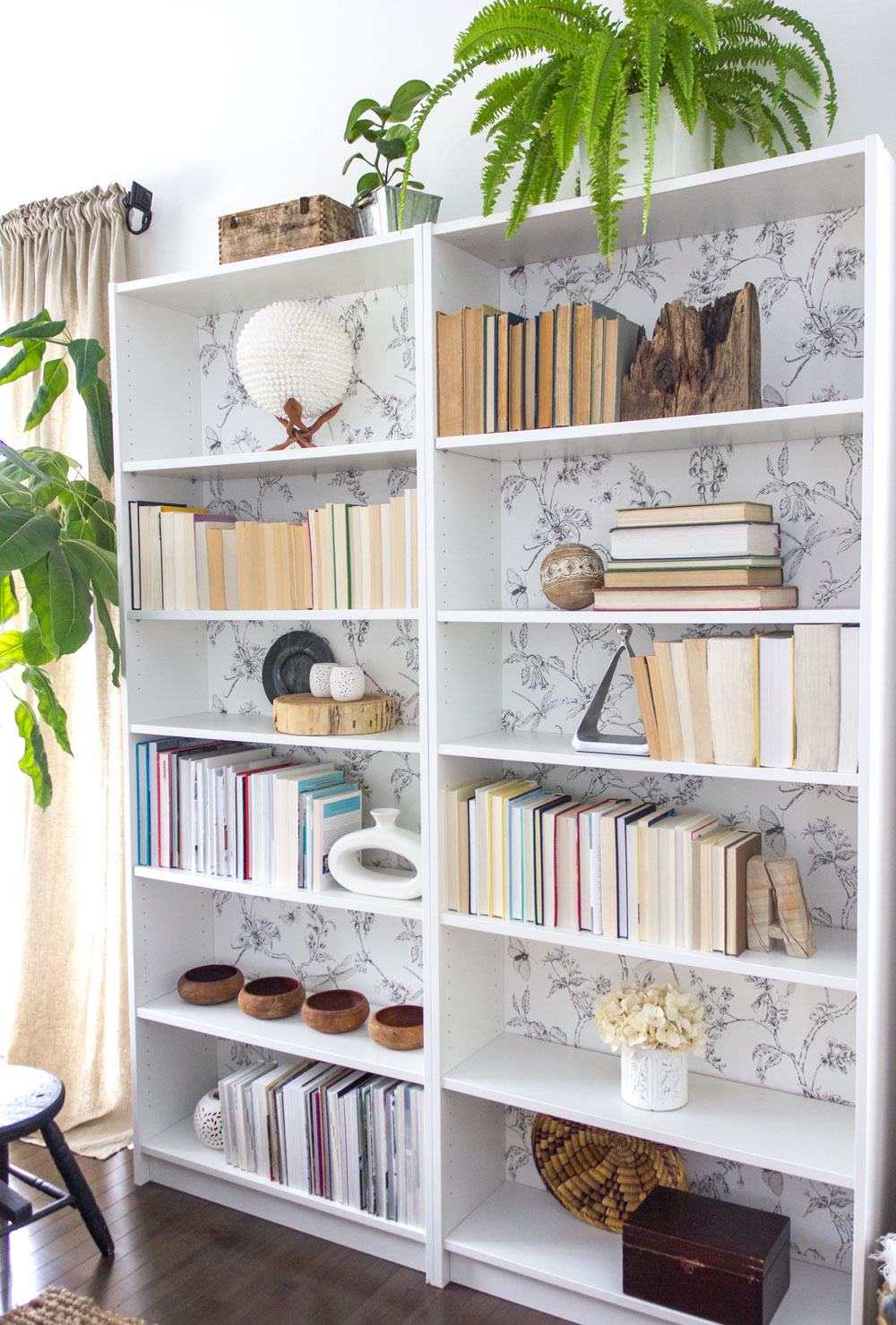
5. Shop your own home.
Often times we have enough nice things to furnish and decorate our homes; we just aren’t using them strategically. Need things for your walls? Look at your baskets, quilts, even interesting placemats to create unique wall art. Need a nightstand? Put your dresser to use beside the bed. Need more storage? Turn an under-used dining hutch into a linen closet. Need a side table in the living room? Bring out that old trunk from the basement.
6. Get creative.
When you want a change in your home decor, get creative and crafty instead of buying new décor.
- Cover your existing throw pillows in new fabric (yep, learning to sew will come in handy).
- Turn the books on your bookcase backwards for a different look (like I did).
- Rearrange the furniture you already have.
- Switch around curtains to different rooms.
- Move existing artwork around.
- Recover your current headboard for a new look.
- Use canvases to make DIY abstract art over top of the masterpiece you did before.
- Wrap tin cans with rope or other salvaged material to create pretty plant pots.
The average house size in North America has doubled since the 1970’s, yet we still have more stuff than we can fit inside them. We cram our garages, basements and closets full of stuff we rarely use. Let’s take the time to sort out what we already have and try not to buy new when we don’t have to. Let’s do our part for the planet while also simplifying our own homes for better living. Let’s think sustainably, and put away our wallets.
This is obviously a huge global problem that we cannot completely remedy individually. But the piece of this scary system that we can control is our own consumption. I’m going to try to be more mindful. Are you?
Here are some ideas for repurposing, reusing and salvaging:
Repurposed coffee can pendant lamp tutorial
upcycled glam bedside table tutorial
repurposed tin can planters

antique credenza, antique chairs, antique wheat sifter, salvaged stove covering and DIY artwork on the walls

DIY art of pieces of scrap boards
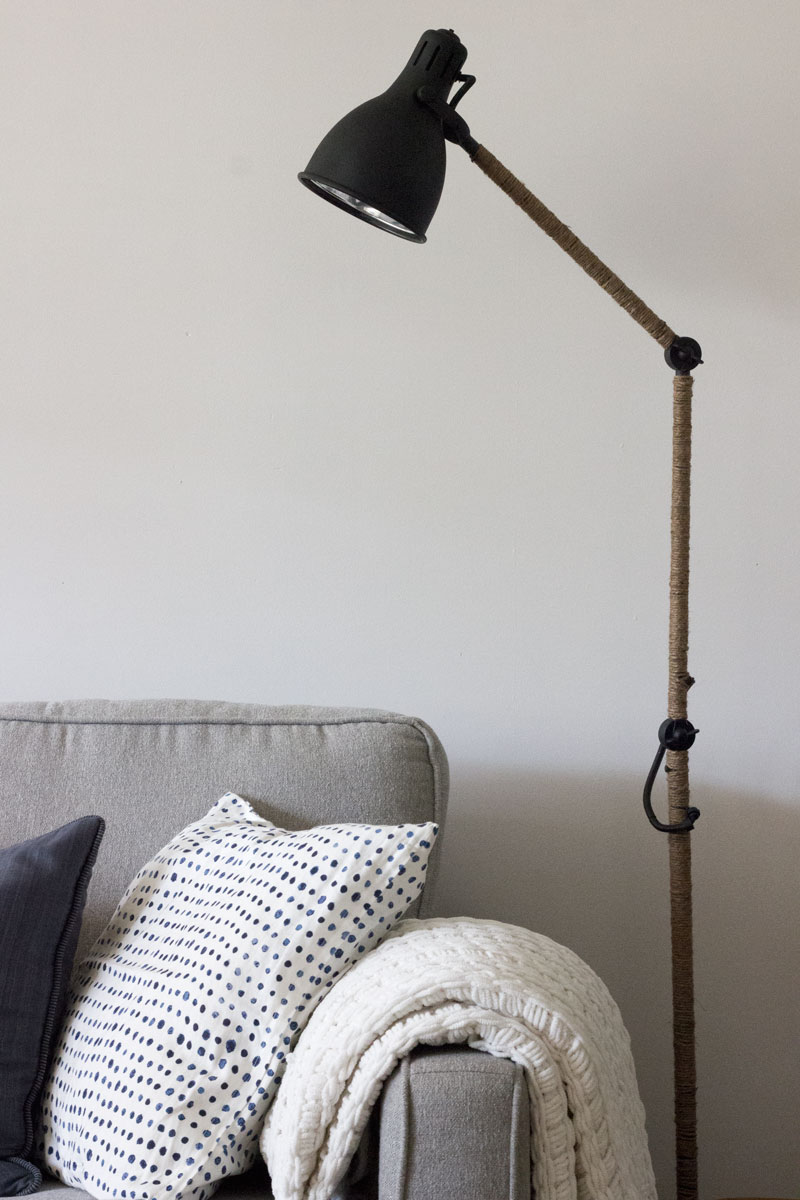
Repurposed floor lamp instructions
driftwood and sea glass as decor
yarn-wrapped tin can
DIY wood shelf plant hanger tutorial
Salvaged driftwood with hooks

Recovered headboard in duvet cover using only a staple gun
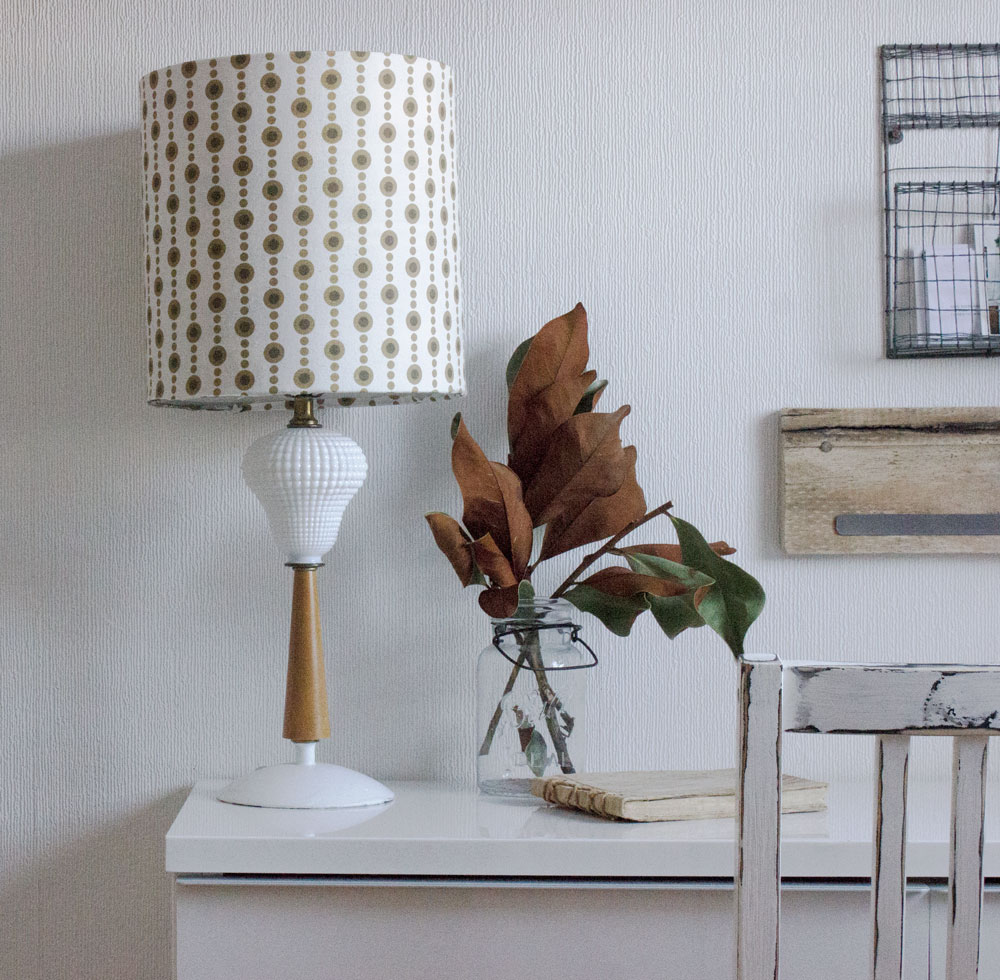
salvaged lamp and recovered shade – tutorial
Note: this post was updated from previous writing.

